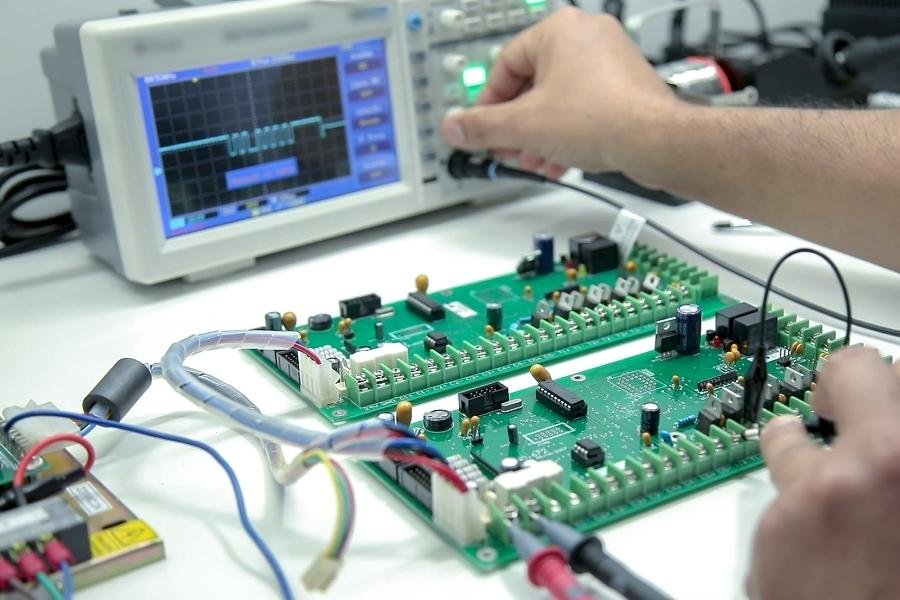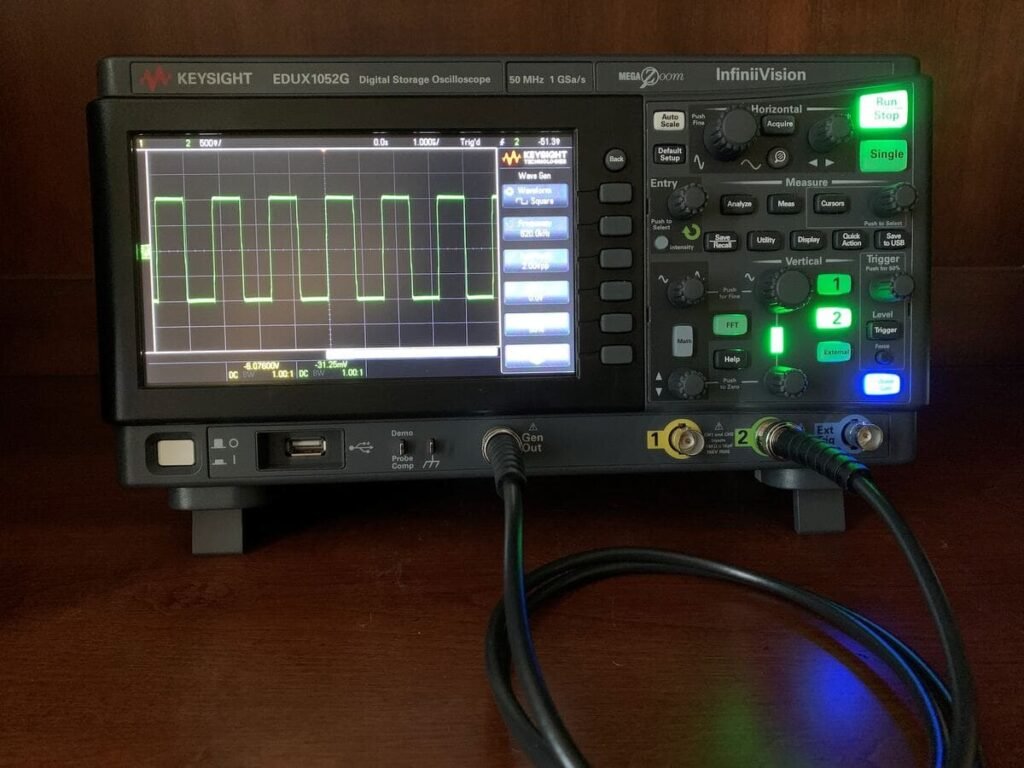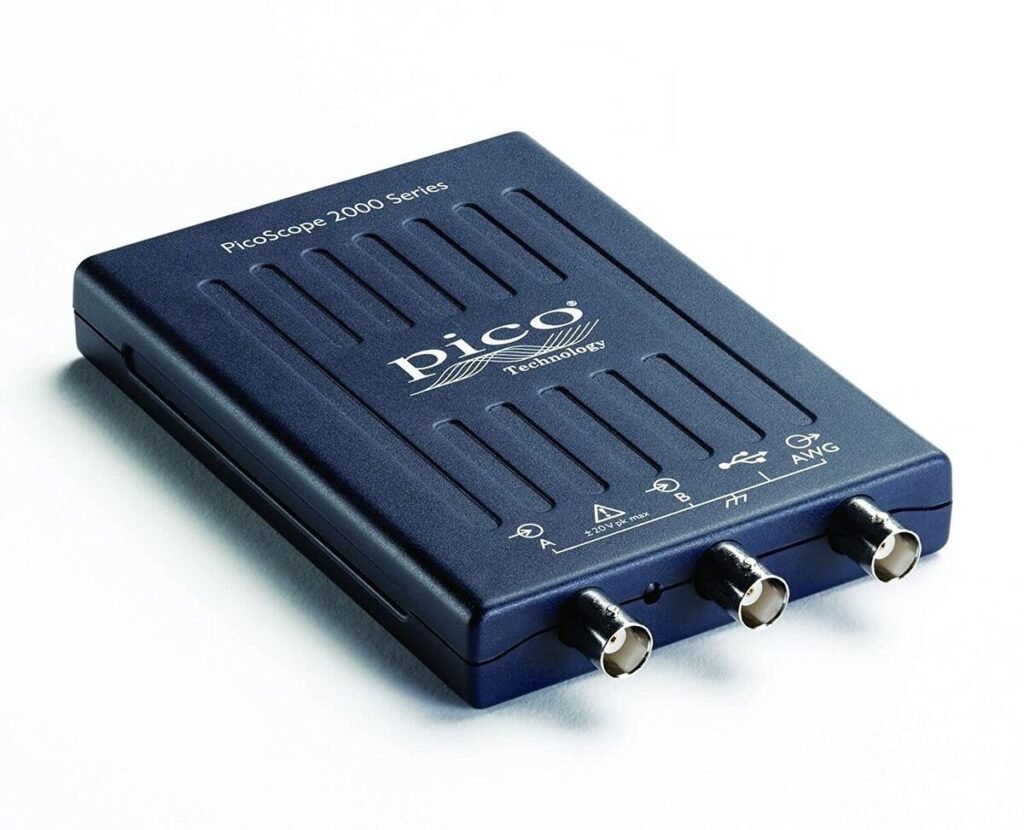Top 3 Best Oscilloscopes for Hobbyists under $199 (in 2024)
An oscilloscope is one of the most critical tools used by an electronics hobbyist. It lets you view the electrical signals present in a circuit at a given moment. In this article, we are going to review some of the best oscilloscopes for hobbyists. Without further ado, let’s get started!






Don’t forget to also peruse our oscilloscopes, spectrum analyzers, and other electronics lab tools.
3 Best Oscilloscopes For Hobbyists
FNIRSI 1014D Digital Oscilloscope
(2 in 1 DDS Signal Generator)
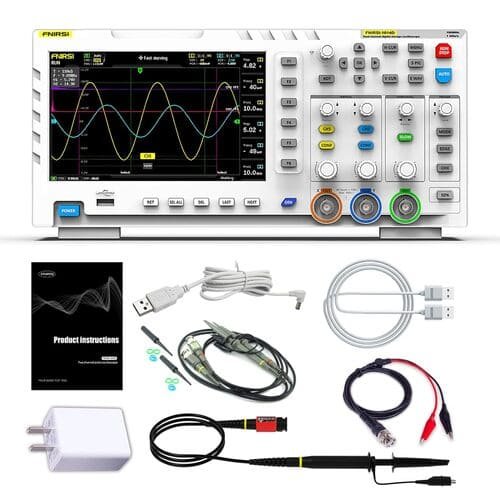

This is a high-end digital oscilloscope with a high-bandwidth and high-resolution display, making it one of the best oscilloscopes for hobbyists. The bandwidth of 100 MHz * 2 and resolution of 10 ns make FNIRSI 1014D ideal for the hobbyist who wants a wide dynamic range and a high sampling rate for capturing fast signals.
The large 7-inch 800*480 resolution high-definition LCD screen makes it easy to view both the signal and the captured data on the oscilloscope at the same time.
FNIRSI 1014D comes with two channels and has two built-in probes for probing voltage and current as well as a built-in temperature sensor. It has an intuitive menu system and menu items with a descriptive name so that you can easily navigate the controls.
This oscilloscope offers a USB port, which you can use to connect it to your computer and transfer data files. It also has an Ethernet port, which lets you send captured data files to your computer on a network directly from the oscilloscope.
Hantek DSO2D10
Digital Storage Oscilloscope (DSO)
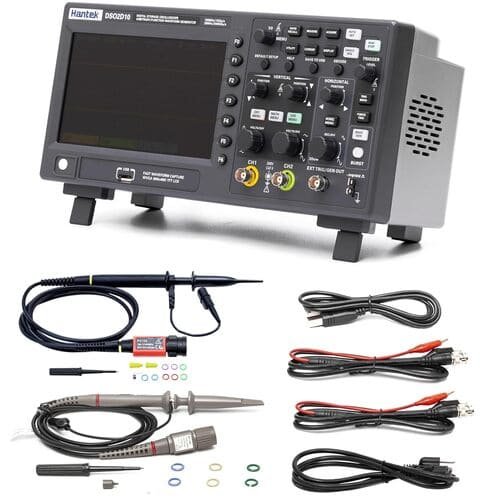

A storage oscilloscope captures the electrical signal over a long period of time. This makes Hantek DSO2D10 ideal for viewing long-term changes in voltage and current in your circuit.
This digital storage oscilloscope also lets you zoom in on a signal section, which you can then store as a picture or data file. It also has the ability to add a reference waveform so that you can compare captured data with a known source.
A digital storage oscilloscope can come with either an ASO or a DSO functionality. An ASO has an analog input, while a DSO has a digital input. This device will let you save captured data for future reference. It also comes with a built-in analysis tool, which lets you perform rudimentary tests.
Hantek DSO2D10 oscilloscope is known for having a wide bandwidth, making it suitable for capturing slow and high-frequency signals.
For more detailed information about oscilloscopes from this brand, you can read our Hantek Oscilloscopes Review.
Aiteme ADS1014D
Analog Storage Oscilloscope (ASO)


An analog storage oscilloscope captures the electrical signal as a graph. This makes Aiteme ADS1014D ideal for creating a long-term graph of voltage and current changes in your circuit.
It can also be used to draw reference voltage and current curves, which you can then save as a data file. This oscilloscope can be connected to a computer and used to draw graphs and display data from the computer as well.
Aiteme ADS1014D oscilloscope is known for having a wide bandwidth and can be used to capture slow and high-frequency signals. It is ideal for monitoring circuits that are not in use all the time.
What To Look For?
An oscilloscope is one of the most critical tools used by both hobbyists and professional electronics engineers. While it is used by the former for visualizing the electrical signals in a circuit while testing it, the latter uses it to troubleshoot circuit boards.
A good oscilloscope should have high bandwidth, a high-resolution display, and ample storage capacity. It should also be easy to use with built-in measurements and calibration controls as well as probe inputs for alternate sensors.
The best oscilloscope for hobbyists should have a crisp display and enough bandwidth to register fast signals. It should be easy to use with built-in measurements and calibration controls as well as probe inputs for alternate sensors. Furthermore, it should have sufficient memory to store captured data files and a USB port or Ethernet connector so that you can transfer them easily onto your computer.
Amazon Review Feedback on Best Oscilloscopes for Hobbyists
The oscilloscope market offers diverse options for budget-conscious users, with FNIRSI and Hantek providing notable entries. The FNIRSI 1014D 2-in-1 Digital Oscilloscope stands out for its exceptional value and user-friendly interface. Customers praise its affordability, straightforward navigation, and responsive technical support. The compact size and lightweight design add to its appeal, making it ideal for portable use. However, opinions vary regarding its quality, performance, and accuracy, suggesting it may be best suited for hobbyists or basic applications.
Hantek’s DSO2D10 Digital Storage Oscilloscope receives high marks for its intuitive design, quality construction, and overall performance. Users appreciate its compact form factor and aesthetic appeal. Many report that the device quickly proves its worth, even paying for itself on initial projects. Like the FNIRSI model, there are mixed reviews regarding its speed and accuracy.
The ADS1014D 2-in-1 Oscilloscope is praised for its quality and value, with users describing it as a reliable general-purpose scope offering accurate measurements. However, some customers have encountered challenges with controls and basic features, leading to mixed feedback on its ease of use.
These oscilloscopes demonstrate that affordable options can provide valuable functionality for many users, though they may involve some trade-offs in advanced features or precision compared to higher-end models.
Reviewer Final Comments
In this buying guide, we have reviewed three of the best oscilloscopes available for hobbyists in 2024.
The FNIRSI 1014D impresses with its compact design and user-friendly interface, making it a great choice for beginners. With its impressive bandwidth and multiple input channels, it provides hobbyists with the versatility they need to explore different electronic projects.
The Hantek DSO2D10 stands out with its high-resolution display and advanced triggering capabilities. This oscilloscope is well-suited for hobbyists who require precise waveform analysis and want to go deeper into their projects.
Lastly, the Aiteme ADS1014D offers a balance between affordability and functionality. It provides hobbyists with a reliable and feature-rich option at a reasonable price, making it an attractive choice for those on a budget.
Overall, whether you’re a novice hobbyist or a seasoned electronics enthusiast, these oscilloscopes offer excellent options to suit your needs.

